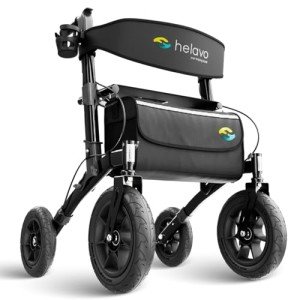The Essential Guide to Handicapped Walkers: Enhancing Mobility for Individuals with Disabilities
Walking help play a vital function in improving the quality of life for people with handicaps. Among these, handicapped walkers, also called walkers or rollators, are important tools that assist users in maintaining mobility, self-reliance, and security. This blog post intends to offer an in-depth introduction of handicapped walkers, discussing their types, benefits, and key factors to consider for users when choosing a walker that best matches their needs.
Tabulation
- What Is a Handicapped Walker?
- Kinds Of Handicapped Walkers
- Requirement Walkers
- Two-Wheeled Walkers
- Four Wheel Walker-Wheeled Walkers
- Features to Consider When Selecting a Walker
- Benefits of Using Handicapped Walkers
- FAQs
- Conclusion
What Is a Handicapped Walker?
A handicapped walker is a mobility aid designed to assist people who have difficulty walking or maintaining balance due to disabilities, injuries, or aging. It offers support, stability, and safety, helping users navigate their environment with higher self-confidence and independence. Handicapped walkers are available in numerous designs to suit various mobility difficulties, making them versatile tools for many individuals.
Types of Handicapped Walkers
Understanding the various kinds of walkers is important for choosing the right one. Below is a summary of the main types of handicapped walkers:
| Type | Description | Perfect For |
|---|---|---|
| Requirement Walkers | Fundamental frame with no wheels, requiring the user to raise it to move. | Individuals with stable balance. |
| Two-Wheeled Walkers | A Lightweight 4-Wheel Walker walker equipped with two front wheels for much easier motion. | Users needing more mobility support. |
| Four-Wheeled Walkers | An advanced design with four wheels, handlebars, and frequently a seat. | Those requiring optimum support and rest options. |
1. Standard Walkers
Requirement walkers, one of the most fundamental variation, are constructed as a tough frame. Users lift the walker and place it forward, enabling stable movement. This type of walker is ideal for individuals with limited mobility however who keep good balance.
2. Two-Wheeled Walkers
These walkers integrate 2 front wheels, substantially boosting maneuverability compared to basic walkers. Users can press the walker instead of lifting it, making it simpler to browse.

3. Four-Wheeled Walkers
Also called rollators, four-wheeled walkers come with wheels on all four legs, making them Easy Maneuver Walker to press. Many designs also include a comfortable seat and backrest, allowing users to take breaks during longer strolls or trips.
Features to Consider When Selecting a Walker
Before purchasing a handicapped walker, it's essential to assess certain features that might improve the user experience and safety. Here are some essential factors to consider:
| Feature | Description |
|---|---|
| Weight Capacity | Make sure the walker supports the user's weight. |
| Height Adjustability | Search for adjustable handlebars for a proper fit. |
| Wheels Quality | Analyze if the wheels are robust for various surfaces. |
| Brake System | Recognize if it has a reliable braking mechanism for safety. |
| Storage Options | Think about if it has a basket or bag for individual items. |
Advantages of Using Handicapped Walkers
The benefits of using handicapped walkers extend beyond mobility, supplying emotional and physical advantages:
- Increased Independence: Walkers make it possible for users to move around without relying excessively on caregivers or member of the family.
- Improved Safety: With boosted stability, walkers substantially minimize the risk of falls, adding to a safer living environment.
- Enhanced Confidence: Users typically report feeling more secure and confident when utilizing a walker, encouraging them to engage more in social activities.
- Health Benefits: Regular usage of a walker can promote physical activity, resulting in much better cardiovascular health, improved muscle tone, and overall well-being.
Frequently asked questions
1. How do I know which type of walker is best for me?
Choosing the very best Bariatric Rollator Walker depends upon your physical abilities and mobility needs. Consulting with a healthcare professional or physical therapist can provide tailored suggestions based on your particular health scenario.
2. How should I maintain my walker?
Regularly check your walker for wear and tear, mostly focusing on the wheels and brakes. Wipe down surfaces with a damp cloth to keep it clean and store it in a dry place when not in usage.
3. Can I use a walker on unequal surfaces?
While some walkers are much better fit for irregular surface areas than others, care is recommended. It may be helpful to pick a walker with larger wheels for much better stability on such terrains.
4. Are there walkers designed particularly for outdoor usage?
Yes, lots of Four Wheel Walker-wheeled walkers are particularly designed for outdoor usage, featuring bigger wheels and more robust building to manage various surfaces.
5. Do walkers been available in different colors or designs?
Yes, various designs, colors, and designs are available to cater to personal preferences while still meeting functional requirements.
Handicapped walkers are transformative help that can substantially enhance the lifestyle for individuals dealing with mobility obstacles. By comprehending the types of walkers, their features, and the advantages they offer, users can make educated choices that align with their personal mobility needs. As technology and design progress, the future of handicapped walkers promises even greater assistance and comfort, encouraging independence and an active way of life for all.

